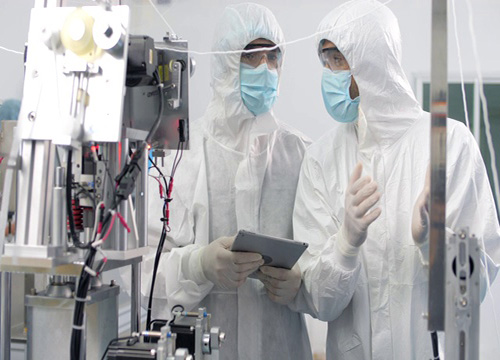Recently, NVIDIA announced impressive financial results, with a staggering 843% increase in net profit, showcasing the strong momentum of AI and high-performance GPUs once again in the industry. Driven by AI, the demand for high-performance GPUs continues to surge, prompting an urgent expansion of the supply chain, keeping everyone busy. However, at the same time, the consumer electronics sector has not yet recovered, and the overall semiconductor market remains in a "winter," leading to a situation of "two extremes" in the industry that is expected to persist.

1, GPU demand is soaring, and the industry supply chain is actively expanding production.
HBM (High Bandwidth Memory) and advanced CoWoS (Chip-on-Wafer-on-Substrate) packaging are key factors influencing the production capacity of high-performance GPUs. To meet the demands of the high-performance GPU market, the industry is actively expanding production. In 2023, due to the explosive growth in AI demand, there is a significant surge in HBM demand. Even though memory manufacturers are actively increasing their production capacity, it still falls short of market requirements.
A survey conducted by the global market research firm TrendForce indicates that memory manufacturers are attempting to boost HBM production capacity by expanding their TSV (Through-Silicon Via) production lines, in response to increased orders from NVIDIA and other cloud service providers (CSP) and developing their own chips.
In the field of advanced CoWoS (Chip-on-Wafer-on-Substrate) packaging, Charlie Boyle, Vice President and General Manager of NVIDIA's DGX Systems, has previously stated that the current GPU shortage is not due to NVIDIA's misjudgment of demand or limitations in TSMC's wafer production capacity. According to him, the primary bottleneck for GPUs lies in the packaging process.

2, The consumer electronics market continues to remain weak.
According to a report from August in the "Nikkei Asian Review," it is evident from the investment plans of the world's top 10 major semiconductor manufacturers in the United States, Europe, South Korea, China (Taiwan), Japan, and other regions that global investment by these 10 major semiconductor companies is expected to decrease by 16% year-on-year in 2023, falling to $122 billion. This marks the first decrease in four years. Investment in memory by these top 10 semiconductor companies is projected to decline by 44% in 2023, showing a significant decrease. Additionally, investments in logic semiconductors for computational purposes are also expected to decrease by 14%.
SK Hynix has decided to expand the scale of production cutbacks for NAND products. Jaejune Kim, Executive Vice President of Samsung Electronics Memory Business Division, mentioned during a financial results conference call that Samsung would extend its production reduction measures and make additional adjustments in production volumes for certain products, including NAND flash memory chips.




 Need Help?
Need Help?







